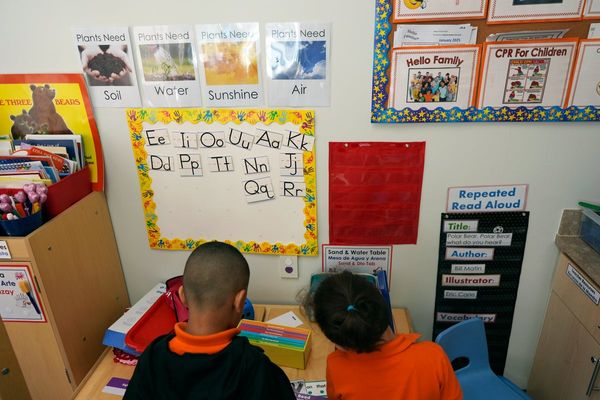
Australia’s biggest oil and gas company, Woodside, came out with its annual climate change report this week.
“Woodside aims to thrive through the energy transition by building a low-cost, lower-carbon, profitable, resilient and diversified portfolio,” the company said, while also reporting an eye-watering $7.7bn profit for 2022.
The report can be seen as an attempt by a major international fossil fuel company to justify its social licence in a world that needs to wean itself off fossil fuels to avoid an ever-worsening climate crisis.
A glance at the company’s “highlights” from the report appeared to suggest Woodside was cutting emissions from its operations with bold plans to invest in a cleaner future. So what’s the reality?
According to the company’s report, the emissions of carbon dioxide and methane from its own operations (known as Scope 1 and 2) were 5.3m tonnes of CO2-equivalent in 2022.
But the vast majority of emissions come once the gas is sold and used. The company says it knows less about that, but does offer an estimate in a table at the back of the report.
For 2022, use of the company’s oil and gas – mostly from customers burning it – resulted in 60.7m tonnes of CO2 being released into the atmosphere.
So all up, we can say Woodside’s emissions were about 66m tonnes for 2022 (Australia’s national annual emissions are about 490m tonnes).
The 2022 emissions are based on the company’s production of oil and gas, reported as the equivalent of 157m barrels of oil – a record high for the company.
But this year production is expected to be between 180m and 190m barrels, which will see the company’s emissions rise even further.
Last year Woodside merged with BHP Petroleum, creating the biggest oil and gas company in Australia.
The company’s targets for Scope 1 and 2 emissions are set at a baseline from their average between 2016 and 2020.
By 2025, the target has those emissions falling by 15% and, in 2030, by 30%. There’s an “aspiration” to reach net zero by 2050.
On its website, Woodside boasts that its 2022 emissions were 11% below that baseline. This is a “highlight”, the company says.
However, a more careful reading shows the company’s emissions actually went up by 3.5%.
To get below its baseline, the company simply bought 0.75m tonnes of CO2 in offsets and then retired them. That turns a 3.5% rise into an 11% fall.
The company justifies its use of offsets by saying it is “inherently consistent with balancing sources and sinks of emissions” and that its participation in carbon markets “can enhance investment flows and integrity”.
Decarbonisation outpaced by expansion
The company says it has three ways to cut its emissions: better design, more efficient operations and buying offsets.
Many decarbonisation experts agree that offsets should be a last resort after every other step has been taken.
So how is this going to go at Woodside?
In 2022, the company says, its “decarbonisation actions” reduced emissions by just 0.025m tonnes (remembering the company’s own emissions were 5.3m tonnes that year).
According to the report, even if the company implemented all the decarbonisation opportunities it says it has identified, by 2030 this would not be enough to recoup the extra emissions it expects from the company’s rising production of oil and gas.
Any further reduction in emissions to reach its 2030 target comes from buying offsets, the report shows. The company’s decarbonisation plans are being eaten by its own expansion.
The Perth-based company also revealed this week that its underlying profit in 2022 was US$5.2bn ($7.7bn). How is the cashed-up company using that profit?
According to Woodside, another highlight of its climate change report is a commitment (actually announced in its 2021 climate report) to spend US$5bn from 2021 to 2030 on “new energy products and low carbon services”.
These investments would help its customers cut emissions, Woodside says.
But so far, the company says, it has spent only US$100m – less than 2% of the US$5bn target.
How does that compare with spending elsewhere in the business?
The company says in its annual report – also released this week – that it expects to spend between US$6bn and US$6.5bn this year, mostly on an oilfield in Senegal and its Scarborough LNG project in Western Australia.
According to its own figures, Woodside is spending more in one year on developing its oil and gas facilities than it plans to spend in a decade on “new energy products and low carbon services”.

Future of gas
Like most companies heavily invested in gas, Woodside is being forced to justify a future for its fossil fuels in the face of the unrolling climate crisis and efforts to decarbonise around the world.
The company points to four pathways produced for the UN’s Intergovernmental Panel on Climate Change (IPCC), which looked at how the world might develop while keeping global temperatures down.
Woodside says it prefers the pathway “which involves relatively higher levels of natural gas” in the future, and which also relies on a massive increase in CCS – the carbon capture technology that continues to swallow billions of dollars of taxpayer cash in return for minuscule emissions reductions.
Oddly, Woodside points to a pathway developed for a 2018 report when there is a whole suite of new scenarios developed for a more recent IPCC report only last year.
Putting that aside, Woodside wants policymakers to pay attention to just one IPCC scenario that will keep its own product alive while, through the addition of CCS, making energy even more expensive.
Woodside said in Australia the company “sees the potential for the use of gas for power generation in the decades ahead, as the power system grows, decarbonises and remains stable”.
The company points to the Australian Energy Market Operator’s latest long-term plan for decarbonising the electricity grid – known as the Integrated System Plan (ISP).
That plan shows the amount of gas-fired electricity generation is expected to rise from 7GW now to 10GW in 2050. But this doesn’t mean gas-fired plants will be burning more gas than they do now.
Dylan McConnell, an energy systems analyst at the University of New South Wales, says AEMO’s plan shows those gas-fired plants will be used much less than they are now, and so the amount of gas being burned to generate electricity will be lower.
He says: “These plants might only run for a few hours a year. That’s useful from a system security and reliability perspective, but that also means it doesn’t burn that much gas.
“AEMO’s [system plan] is not a good justification for producing more molecules of gas.”







